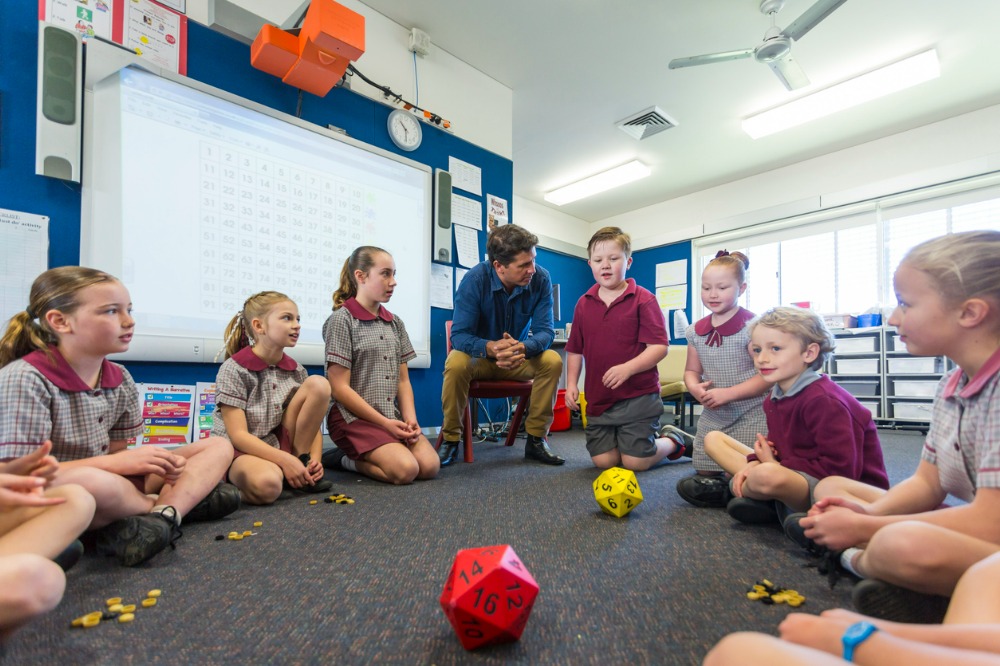
Students’ participation in higher mathematics is at a record low, new research shows, raising concerns about Australia’s capacity to meet future STEM workforce needs.
The new research report from the Australian Mathematical Sciences Institute (AMSI) indicates that while enrollments in calculus-based math subjects have stabilized, recent data show a significant decline from previous years.
In 2020, the number of students studying calculus-based maths decreased significantly, with participation in higher mathematics dropping below 10% for the first time, to 9.2%.
Year 12 participation in calculus-based mathematics has plummeted to an all-time low in the last three years, just 6.4% of Year 12 girls studied higher mathematics in 2022, and less than half of the year 12 graduating cohort (45.8%) studied an elementary level mathematics subject in 2022.
Participation in intermediate mathematics nosedived to 17.6%, well below its former usual participation rate above 20%.
Since then, the number of students studying calculus-based mathematics has failed to recover, with participation rates of 8.9% and 9.0% for higher mathematics and 17.8% and 17.7% for intermediate mathematics, in 2021 and 2022, respectively.
What’s behind the maths enrolment slump?
So, what are the biggest barriers to student engagement in higher-level mathematics, and how can schools and policymakers respond?
According to AMSI Director, Professor Tim Marchant, one key barrier is the serious mathematics teacher shortages occurring in Australia, particularly for schools in low SES and regional areas.
“Due to these teacher shortages many students are being taught maths out-of-field. Out-of-field maths teachers are qualified to teach other subjects, but they typically have little or no formal preparation in the teaching of maths,” Dr Marchant told The Educator.
“The data indicates that two in every five maths teachers aren’t maths trained and 75% of Australian Year 7-10 students experience some out-of-field math teaching. This means that large numbers of students are being taught by teachers who may lack the necessary knowledge, skills, and confidence for teaching mathematics.”
Strategies for schools to lift student engagement
When it comes to what strategies schools can use to help young people, especially girls, Dr Marchant said the Australian Academy of Science Women in STEM Decadal Plan is a useful resource for school leaders.
“This resource can help them develop strategies to grow awareness of the career advantages of mathematics study, for girls at secondary school,” he said.
“Another key initiative that school leaders can implement is to invite female industry professionals to their schools, to increase student awareness of the careers opportunities available in the mathematical sciences, and to provide their student cohorts with diverse role models.”
Dr Marchant noted that two other important initiatives are the CSIRO STEM Professionals in Schools program which matches STEM professionals and teachers, and the STA Superstars of STEM, which provides inspiring diverse roles models, to help inspire young Australians to undertake STEM careers.
Maths teacher shortage a key factor
Dr Marchant said the maths teacher shortage is an important factor in non-progression of students to higher level mathematics and the capacity to teach those mathematics subjects at all schools.
“A national program for the upskilling of out-of-field maths teachers would be highly useful in improving students’ learning, and also be cost-effective,” he said.
“There is increasing industry interest in maths graduates, with roles relating to data science, logistics, optimisation and finance in urgent demand.”
Dr Marchant said this interest is buoyed by the annual salaries for recent math graduates, which he noted are very high, and typically range from $100-200K.
“Initiatives that increase teacher and student awareness about the excellent career opportunities in the mathematical sciences may well increase participation rates in mathematics subjects.”
Where to from here?
Looking ahead, Marchant cautions that continued low enrolment levels will have a significant impact on Australia’s capacity to meet future STEM workforce needs.
“Under-represented groups in mathematics include students from low SES backgrounds and those from regional Australia,” Dr Marchant said.
“The 2022 PISA maths results showed that there is a substantial inequality of outcomes for low SES cohorts, and also for those from regional Australia.”
To achieve equitable societal outcomes, Dr Marchant says the outcomes and participation rates of these cohorts needs to substantially improve.
“Schools in regional Australia tend to be smaller than those in the city and consequently class sizes for higher mathematics subjects are small — if they exist at all.”
Dr Marchant said while most states currently offer some useful virtual learning options, these initiatives could be expanded in scope to create regional virtual schools that pool scarce mathematics teachers and create larger cohorts of students studying higher mathematics.
“Better access to mathematics teachers and larger student cohorts will make mathematics study more engaging for maths students in regional Australia.”


